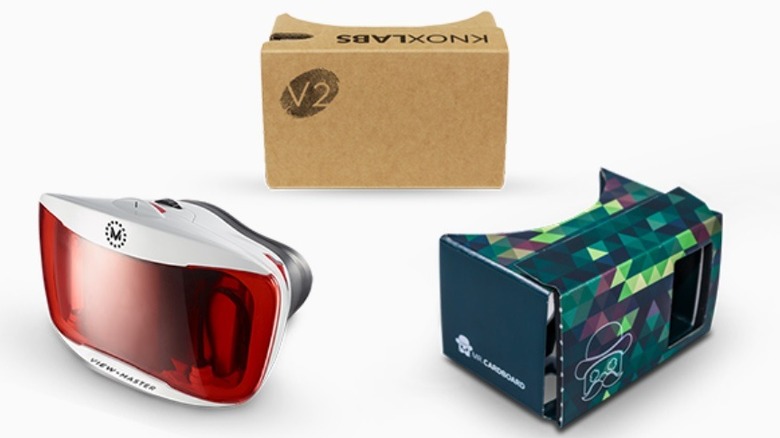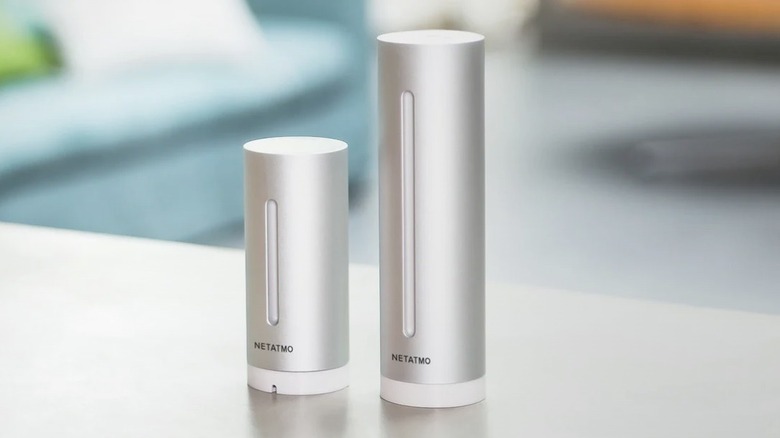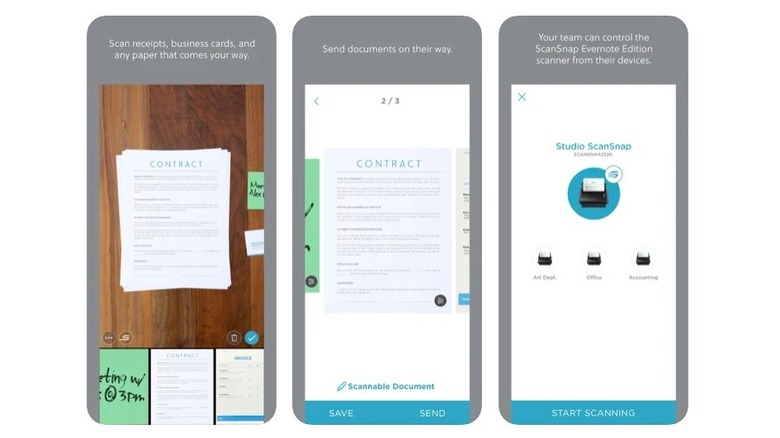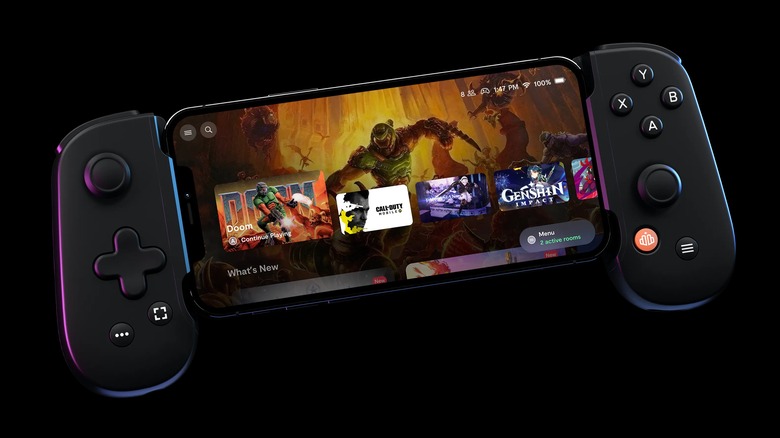

12 Best Uses For Old iPhones
source link: https://www.slashgear.com/862875/12-best-uses-for-old-iphones/
Go to the source link to view the article. You can view the picture content, updated content and better typesetting reading experience. If the link is broken, please click the button below to view the snapshot at that time.

12 Best Uses For Old iPhones
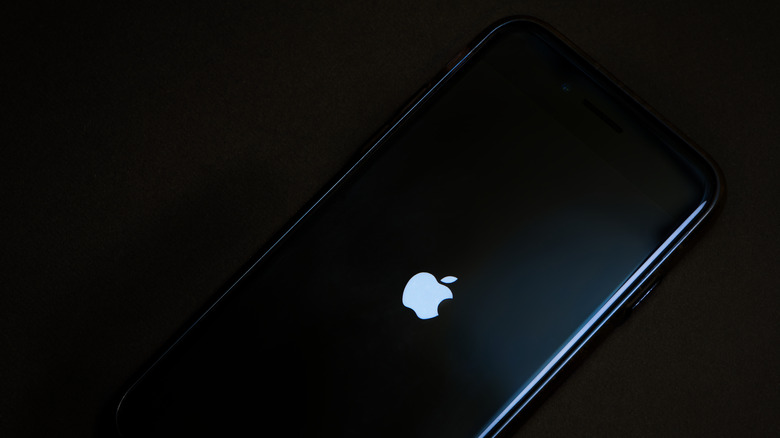
In some ways, life can be measured by the accumulation of things. Our old technology can serve as a time capsule of the months or years when we were using it. In the same way that pulling old toys from a box in the attic triggers childhood memories of playing with them on the bedroom floor, our phones capture memories, both figuratively and literally. Maybe that's why we have such a hard time getting rid of them.
If you've got a steadily growing pile of old iPhones somewhere, threatening to coalesce into a singularity of screens and circuits, you might do well to find a new use for them before they swallow you whole. We previously covered how you can revive an old Android phone, and most of those functions apply to the iPhone as well. If you don't find a suitable use for your old iPhone in this list, jump over there for additional ideas.
Before you do, however, here are some novel ways you can give your old iPhone the second life it deserves.
VR Headset
Virtual reality has endeavored to break from the shackles of our imaginations and into the real world for decades. Previous attempts, like Nintendo's Virtual Boy system, met with mixed responses and short lives, never really gaining a foothold on the market or in the public consciousness.
In recent years, however, advances in technology led to renewed public interest. Devices like the Oculus, Vive, and PlayStation's PSVR brought VR to the masses, so long as you have the desire, a semi-dedicated space, and several hundred dollars of disposable income. That last requirement still has some people at arm's length. Getting into VR at that level requires a substantial investment for something you may not like or use very often.
Other companies took that as an opportunity to serve a different segment of the market who might want to dip their toes into VR without sinking a bunch of money upfront, using technology they already have at hand.
If you've been hesitant about jumping onto the VR bandwagon, an old iPhone can be a great low-cost option. You can get a head-mounted frame like Google Cardboard for about $20. As explained by PCMag, while you won't have access to the same VR lineup as more advanced devices, there are still a number of fun VR experiences that your iPhone is fully capable of running.
Landline, without the line
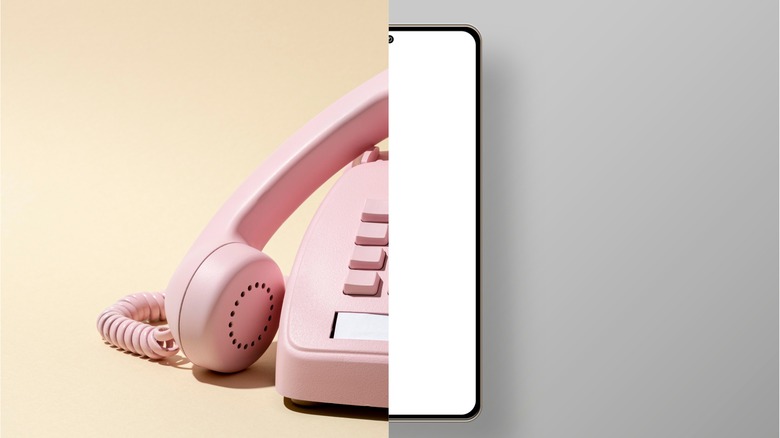
There was a time when the only way you could make a call was with a wired phone tethered to the wall. Calling friends was a shot in the dark. You never knew who would pick up and you often didn't know who was calling you.
While cell phones provide a convenience that landlines never did, there was a certain amount of freedom in being able to leave your house without the expectation that you would always be available. There was also simplicity in a device that did one thing, without the distraction of so much else. Perhaps that's why so many parents wait to get cell phones for their children until they're a bit older, in an attempt to avoid the digital minefield of the internet for a little longer.
Still, there's an interval of years between when a child might start spending time at home alone, and when they're ready for a cell phone. If you need a way for your kids to reach you when you're out, or if you just want a dedicated line for reaching you at home, an old iPhone can be a great solution.
Just because your iPhone is no longer connected to cellular service, doesn't mean it's lost all of its contact functions. iMessage and FaceTime will work over Wi-Fi, (via Apple) turning your discarded iPhone into a modern version of a landline with video calling capabilities.
Digital picture frame
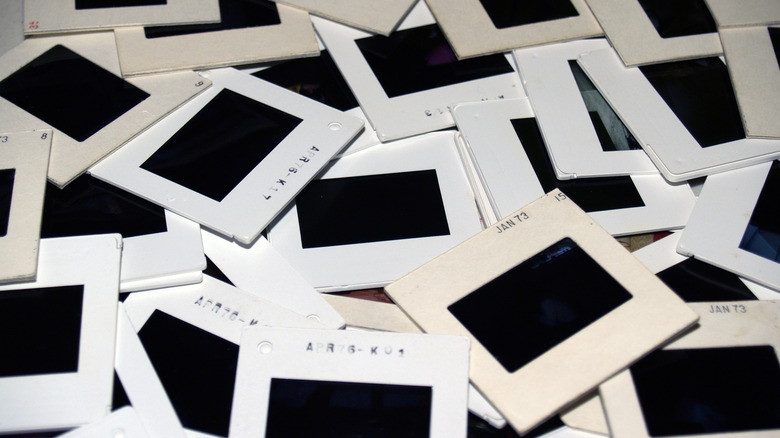
Even if you've since moved onto a bigger and better phone, it's likely that your old phone has a bunch of memories stored on it that you may not be keen to get rid of. Sure, you could go through the hassle of moving them to the cloud or transferring them to your new device, but that can be a pain. Luckily, there's an alternative.
Your photos are already happily stored on your old iPhone and all you really need is a way to display them in your home. Even if it's several years old, your discarded iPhone is still a moderately advanced handheld computer with the ability to perform various complex functions. Displaying stored photographs should be a breeze.
There are a number of applications available in the App store which can transform your phone into a digital photo frame. LiveFrame is one such example, which can display photos stored on your iPhone as well as images from Flickr albums.
The features allow you to customize your viewing experience, choosing photos from a certain time period or from specific albums. You can also apply filters and transitions, set a time of day for the slideshow to turn on and off, and display time, date, and weather conditions, (via Apple).
Weather center
Your iPhone came with a standard weather app, offering a quick overview of the temperature range and predicting the weather for the current day as well as the upcoming 10-day forecast. That's fine for most everyday uses, but if you're going to dedicate a device you can do so much better.
The weather data provided on your phone is generalized for your area and may not represent what you're likely to experience at your home. That's because weather data comes from thousands of stations, ships, aircraft, buoys, and satellites which gather a wide-ranging picture of large systems, (via Lumen). By definition, they're looking at the big picture. A personalized weather station lets you dial in on conditions affecting you directly.
While this solution requires an investment of additional equipment, it's a great way to revive an old iPhone and turn it into something new. The Netatmo Smart Home Weather Station comes with two small towers — one for inside and one for outside — which gather data on temperature, humidity, air quality, CO2 levels, barometric pressure, and weather data, (via Netatmo). All of which conspire to create evolving weather predictions for your immediate environment which can be displayed on your iPhone via an accompanying app.
Turn it into a semiprofessional camera
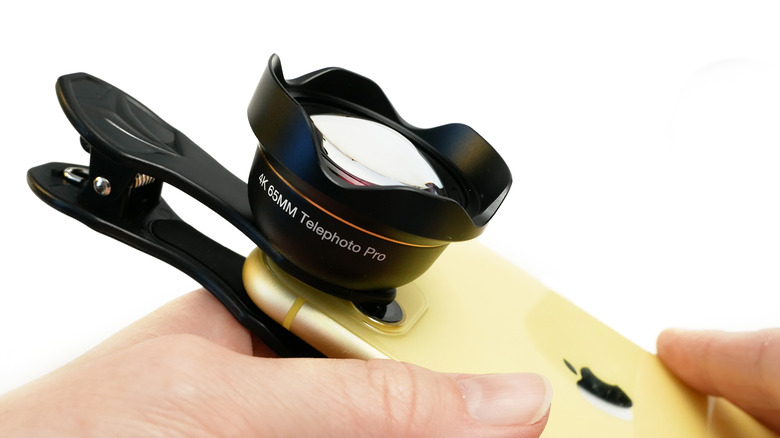
Taking photo and video is one of the most common activities an iPhone is used for. Since the advent of smartphones, we've all become documentarians, detailing in excruciating detail the story most important to us, that of our own lives.
Depending on how old your previous iPhone is, it's likely it has a pretty decent camera built in. Keeping it charged and carrying it around as a dedicated camera can be accomplished without any additional steps, but you can level it up even further with a number of attachments and accessories.
Whatever your imaging needs, there's probably an attachment that can make it happen. From phone cases with built-in lenses for shooting movies or doing landscape photography to filters and light polarizers, there's a wide world of iPhone camera upgrades. More complicated mounts include larger grips, studio-quality microphones, and brighter flashes, (via Wired). Some, like Fjorden, even come with improved camera controls including an enhanced ability to manipulate your camera's exposure, shutter speed, and ISO, all of which are difficult at best with the iPhone's native camera app.
Portable scanner and fax machine
When's the last time you were called upon to scan and fax something? Luckily, it doesn't happen very often, but when it does it can be a huge hassle, especially if you don't have the necessary hardware at the ready. In an increasingly paperless world, easy access to those antiquated technologies can be hard to come by.
While a lot of things we used to scan and fax have transitioned to digital processes, every once in a while, you might need to print, scan, sign, and send a document. Rather than taking a trip to the library or into the office to co-opt company equipment, turn to your old iPhone to save the day.
Evernote's Scannable app is free and captures high-quality images of your documents with little effort, (via Apple). Once you point the camera at a piece of paper, intuitive technology recognizes its shape and orients the image straight on, even if taken at an angle. Images can be saved within Evernote or on the phone's camera roll for easy access.
Once you've signed and scanned your document, apps like FAX.PLUS let you send and receive faxes between 180 countries, at no cost, (via Apple).
Alarm clock and sleep tracker
A modern smartphone is many things. Ironically, actually using them as phones falls pretty far down the list, after texting, surfing the web, and managing email. In a given day, the very first thing you're likely to use your phone for is waking up. Your first interaction is likely turning off the alarm or hitting the snooze.
Phones make pretty good alarm clocks. The chimes and alerts are customizable, and you can easily set as many alarms as you want, at whatever volume and frequency you choose. Using your phone as an alarm clock, however, can be dangerous. Turning off your morning alert can easily turn into wasting time online or doom scrolling the news when you should be getting ready. It's not the ideal way to start your day.
Using an old phone can remedy that to some degree by dedicating it to its alarm function and nothing else, leaving you free to keep the siren song of your actual phone at arm's length a little bit longer. Customer phone docks like this one from Areaware can turn an old phone into something resembling a vintage alarm clock. Pairing your new phone alarm clock with an app like Sleep Cycle can also track your sleep patterns and give you useful data for maximizing your rest.
Handheld gaming device
You're probably already playing games on your phone. The allure of mobile games is too strong for most of us to resist forever. Before long, you're playing match-three games, even if you don't really want to. In fact, more people play games on their phones than on consoles and PCs combined, (via Newzoo).
Even without cellular service, your old phone still has access to the app store via Wi-Fi, including Apple Arcade, granting you continued access to all of the games you love, or love to hate. Clearing away all of the unnecessary applications on your now-dedicated gaming machine leaves more space for games and your old phone can become a serviceable gaming device.
Pairing the iPhone with a phone-compatible gaming controller completes the transformation from tap and swipe to a full-fledged gaming experience. If you really want to max out your iPhone's gaming capability, stick it inside a Backbone iPhone controller. It'll cost you $99.99 upfront, but once it's connected to your iPhone 6 or newer via the lightning port, you'll unlock a lot of functionality.
In addition to playing native iPhone games, Backbone's accompanying app supports remote play to your Xbox or PlayStation, letting you play console games you already own at a distance.
External hard drive
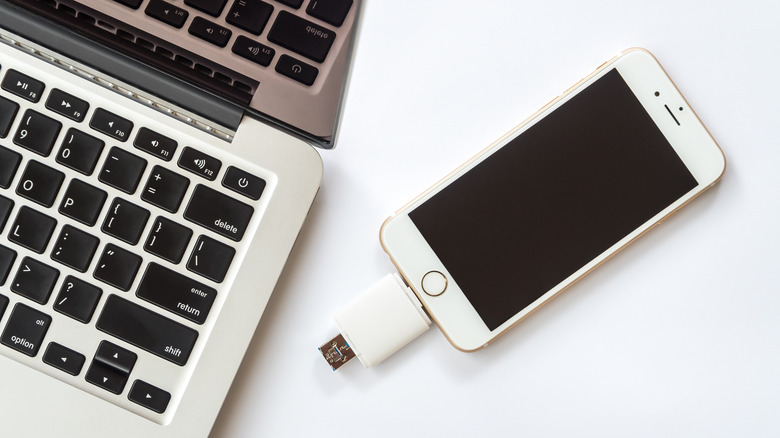
If nothing else, your old iPhone has a decent amount of storage capacity, especially once you rid it of all of the apps and content you're no longer using. Throwing it away or chucking it in a drawer means losing out on storage space which could backup your important files.
Getting your phone to act like a hard drive is surprisingly easy. After all, it's already designed for storing and organizing files, you just need a way to access that infrastructure. File Manager, available on the App Store, provides a simplified interface for locating and moving files around. Connecting directly to a computer will let you drag and drop files like you would any other hard drive or flash drive, and you can also transfer files wirelessly using Dropbox, (via Apple).
Once you're set up, an old phone can become a convenient way to store or transfer files from one location to another. Alternatively, snag a Lightening-to-USB adapter and leave your iPhone connected to your computer at all times to extend its storage capabilities or segment your file storage, (via Make Use Of).
Personal sous chef
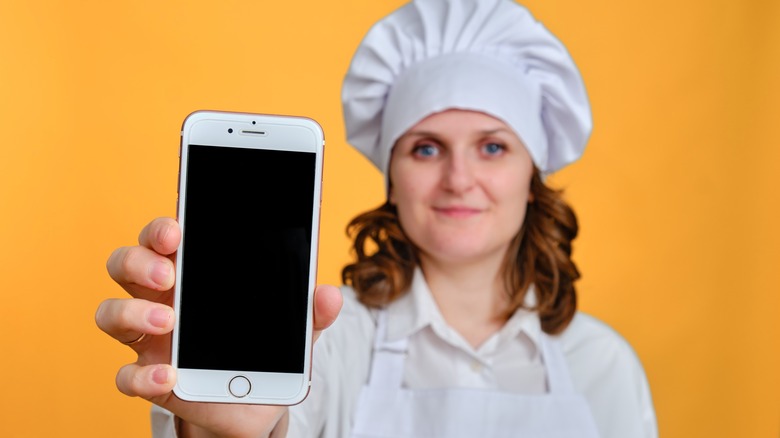
Many of the suggestions on this list involve leaving your phone in the bedroom, connected to the computer, or placed in a central location like the living room. Now I want to talk to you about your kitchen.
As explained by Time, an old iPhone can become the ultimate kitchen assistant once you find an out-of-the-way but accessible location for it among your countertop appliances. Using Wi-Fi, your old iPhone has access to the entire internet of recipes, meal suggestions, and cooking guides. Not to mention timers and reminders. If you have smart appliances, you could even control them using your old phone.
Most importantly, you'll no longer have to worry about hot oil splashing on your everyday phone or sauce getting between the case and phone and stinking up the place every time you bring it to your face.
If you find yourself in a situation where your hands are full or covered over by oven mitts, Apple's digital assistant, Siri, can get you the next steps, set timers, or control appliances with voice commands, leaving your hands free for chopping and sneaking bites.
Use it as an iPod
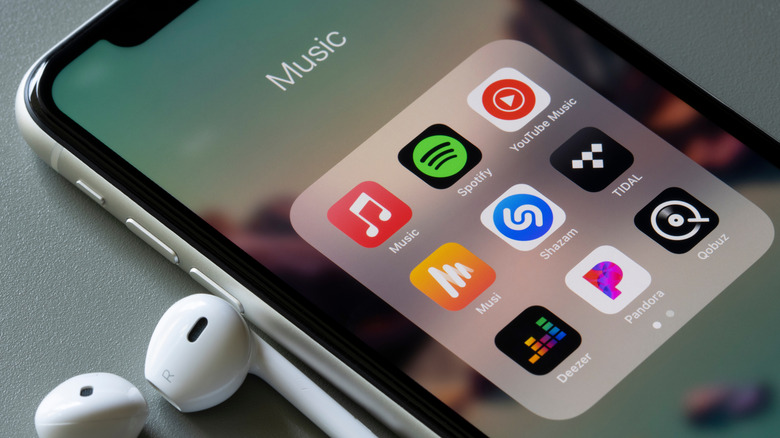
In many ways, the iPhone grew out of its older sibling, the iPod, building on technologies that evolved in the MP3 ecosystem. All of the music functions that made the iPod a technological darling and such a formidable device, also exist on your iPhone no matter how old it is.
Sadly, the iPod has been dying a slow death over recent years, with Apple discontinuing all of their models save for the iPod Touch, the last vestige of a once-proud product line. Less than a week ago at the time of this writing, in early May 2022, Apple announced that the inevitable was finally happening. They stopped production on the seventh-generation iPod. It will still be available in stores as long as supplies last, but once they're gone, the iPod will be no more. Except of course, in the legacy, it helped build in the iPhone which is still going strong.
There's little difference between the iPod Touch and the iPhone, with the notable exception of the ability to make phone calls over a cellular network. If you've got an old phone, that isn't a concern. Without a cellular plan, what you've essentially got is a legacy iPod Touch. Remove all of the extraneous applications to free up space and load your old phone with all of your favorite tunes and you've got a functional iPod that will keep you in your own personal soundtrack long after the last iPod disappears from store shelves.
Turn it into a lamp

So far, all of these solutions assume that your phone is in reasonably working order, maintaining at least most of its initial hardware and functionality. What are you to do if you replaced your phone because it was so beaten and battered you couldn't stand to hold it in your hand any longer?
Even if your iPhone is so old and broken that it's little more than a paperweight, you can still use the built-in flashlight as long as the phone will power one. The light on your phone is small enough but bright enough that it makes for a good bedside light or reading lamp and can be repurposed as such using a customer mount. The options are as variable as your tastes and can match just about any aesthetic preference.
The phone itself is doing all the heavy lifting here, all you really need is a way to prop it up into a lamp kind of shape. If you're the sort of person inclined toward DIY, Instructables has tutorials for crafting and printing your own lamp structure. If you'd rather someone else make it for you, there are online creators who have already done the work, (via iPHONENESS).
The brightness controls let you choose from a few different settings, allowing you to light up an area or read without waking any bedmates. Not bad for something that's spent the last few years in a drawer.
The Best Smartphones Of 2021 Ranked
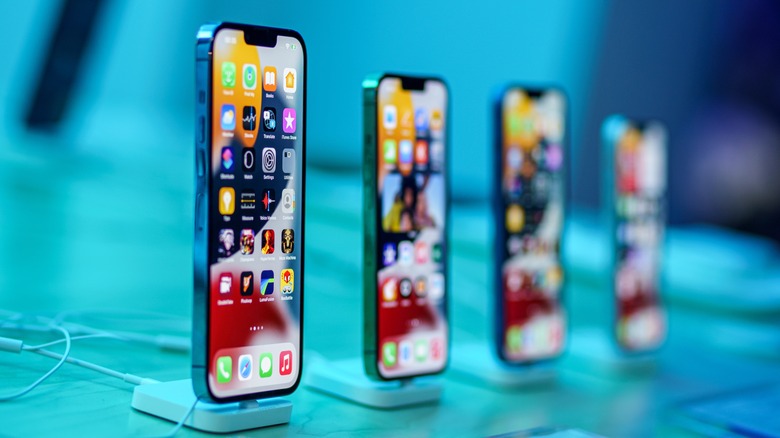
The smartphone market has someone for everyone, whether you're looking for a budget device that doesn't compromise on features or a flagship model sporting the latest and greatest hardware. Despite chip shortages, shipping delays, and production bottlenecks, manufacturers still managed to deliver an assortment of new handsets in 2021, including these top-of-the-line models.
1. iPhone 13
Love it or hate it, Apple makes great products. Samsung was a strong competitor this year, launching high-end smartphones of both the folding and non-folding variety, but the company still hasn't managed to outdo Apple at what Apple does best: offer a tightly integrated, cohesive, and highly useable ecosystem that seamlessly blends its own hardware, software, and services.
Buying an iPhone is more than just selecting iOS as your mobile operating system of choice. The handset works seamlessly with the Apple Watch, which itself still trumps anything you can get sporting Wear OS. In the same way, the iPhone works well with the iPad — which, again, exceeds any other tablet you can get for the simple reason that Android is entirely lacking on slates.
You don't have to buy into the wider Apple ecosystem to get the iPhone, of course, and it's possible the iPhone lacks a key feature you can't live without, whether that's a microSD card slot, built-in stylus, or 3.5mm audio jack. If you're content with a phone that doesn't include those finer trimmings, however, the iPhone 13 is worth serious consideration if you're looking for a high-end upgrade.
The iPhone 13 line is comprised of the iPhone 13 mini, iPhone 13, iPhone 13 Pro, and iPhone 13 Pro Max. These models range in size from 5.4-inches to 6.7-inches, with the best features being found in the two Pro options.
The iPhone 13 Pro packs a Super Retina XDR screen with ProMotion and Ceramic Shield, an IP68 water resistance rating, Apple's A15 Bionic chip, 5G support (including mmWave), ultra-wideband for using things like digital keys, Bluetooth 5, WiFi 6, and gigabit LTE.
Apple put a lot of focus on the cameras and related software with the iPhone 13 Pro. In terms of hardware, buyers get a "Pro" 12-megapixel camera system that includes wide, ultra-wide, and telephoto cameras. That is joined by the 12-megapixel TrueDepth camera on the front of the handset, which also powers the Face ID feature.
These cameras are joined by a variety of software features, including Apple's new "Cinematic mode" for recording movie-like videos. This new mode includes support for the TrueDepth, wide, and telephoto cameras, as well as Dolby Vision HDR.
The iPhone 13 Pro's camera features also include 6x optical zoom, 3x optical zoom for the telephoto lens specifically, support for macro video recording, improved low-light performance, "Photography Styles," and what Apple describes as an end-to-end workflow directly on the phone that includes editing in ProRes and Dolby Vision.
Not interested in Apple products? Fortunately, several excellent Android alternatives were released this year.
2. Galaxy S21
Samsung's Galaxy line has been around for years and there's a reason it has remained so popular. The latest and greatest installment in the series, the Galaxy S21, offers a huge number of features, but at a price not all consumers are willing to embrace. If cost isn't an issue for you, check out the Galaxy S21 Ultra 5G, the top model in the new line.
The Galaxy S21 Ultra 5G has a huge 6.8-inch Quad HD+ Dynamic AMOLED 2X Infinity-O display with 3200 x 1400 pixel resolution, giving it a pixel density of 515ppi (pixels per inch). Notable features include HDR10+ certification, a 120Hz refresh rate, a 40-megapixel "hole-punch" selfie camera, four rear cameras (10-megapixel telephoto F2.4 and F4.9 units, 108-megapixel wide-angle, and 12-megapixel ultra-wide), as well as a pressure-sensitive S Pen.
In addition to the LTE and 5G connectivity, the model also supports up to 2.4Gbps download speeds, offers Bluetooth 5.2, and includes ultra wideband (UWB) support for digital keys. The model is powered by the Snapdragon 888 alongside 12GB RAM and 512GB internal data storage.
The S21 Ultra packs a bunch of hardware capabilities and software features targeting what consumers are often most interested in. This model's camera features are particularly notable with things like 100x "space zoom," a 40-megapixel camera combined with software that produces what Samsung claims are "studio-quality portraits," and support for shooting videos in 8K resolution.
The S Pen inclusion takes the S21 Ultra to the next level with tablet-like functionality, making it easier to handle a wide variety of advanced features – like editing videos and photos directly on the device. This is the first Galaxy model to pack a 5nm processor, enabling faster performance — including when it comes to AI-powered features — compared to previous models.
The 5000mAh battery combined with some efficiency features gives users a runtime beyond a full day (though it largely depends on how the device is used), plus there are convenience features like wireless PowerShare for charging, for example, a pair of true wireless earbuds with wireless charging support.
The powerful hardware, sophisticated software, and well-rounded array of features make the S21 Ultra one of the top smartphones on the market right now, though its price will be the biggest issue for many consumers. The Galaxy S21 5G (the one with the 6.2-inch display) starts at $799.99, but making the jump to the Ultra 5G model pushes the starting price to $1,200. There are some ways to reduce the price, including trading in certain devices for a substantial discount, but the final price will still likely be substantial.
3. Pixel 6
Though Google's Pixel has never managed to grab a significant share of the smartphone market, the company continues to update the line, arguably using its own hardware as a way to showcase Android in its purest form.
The Pixel 6 was released this year as the latest major installment in the smartphone family, bringing key features like Google's Tensor chip, the Titan M2 security chip with five years of updates, two rear camera, and what Google calls an adaptive battery that optimizes energy use so consumers can go longer between charging sessions.
Google historically offered a single camera with its Pixel smartphones, electing to enhance its mobile camera capabilities with software. This is known as computational photography, which utilizes artificial intelligence and software to improve the raw image data captured with the Pixel's camera. It was inevitable that Google would eventually increase the number of cameras included on its handsets, however, and the Pixel 5 marked the first time a model in this line was released with a dual-camera system. The Pixel 6 continues this trend with its own dual-camera array.
The Pixel 6 packs larger camera sensors compared to the previous model, which, among other things, enables the phone to gather 150-percent more light for brighter, higher-quality images in lower-light environments. This latest flagship model includes an ultra-wide lens for capturing larger scenes.
The software magic remains, including some features that would otherwise require you to fire up Photoshop. Magic Eraser is one excellent example: it resides on Google Photos and works by removing unwanted objects and people from images. Portrait Mode offers a blurred background for higher-quality selfies, plus there's Motion Mode for more dynamic action shots in environments with a lot of movement.
The model packs other notable features, including support for 5G networks, real-time language translations integrated into things like chat and podcast captions, an IP68 rating against dust and water exposure, and a high refresh rate for what Google calls "Smooth Display." Though you won't get a stylus like the one offered with the S21 Ultra, the Pixel 6 comes with some of its own perks, the best being its regular software updates known as feature drops.
Adding to the appeal is the somewhat lower price tag accompanying the Pixel 6; an unlocked version of the device with 128GB starts at $599, while the 256GB model starts at $699, making it a more economical choice for consumers who want high-end features and a bunch of storage space while staying well below a $1,000 price point.
4. Galaxy Z Flip 3
Many consumers aren't ready to embrace the foldable evolution yet, but this year brought a couple of excellent options for those who can't wait any longer. Samsung's Galaxy Z Flip 3 is the latest installment in the company's foldable product lines; this is the version that folds like an old-school clamshell flip phone, not to be confused with the book-style Galaxy Z Fold 3.
The Galaxy Z Flip 3 beats out the Z Fold 3 on this list for one simple reason: it is cheaper and, with the right trade-in device, the price can be dropped down to a very comfortable $325 or so. The model's defining feature is its flexible display, enabling the smartphone to fold in half horizontally across the body.
When unfolded, the Galaxy Z Flip 3 has a 6.7-inch screen; the device looks like a long, ordinary high-end smartphone. When folded, however, the length drops to just over 3-inches with a width a bit over half an inch. The screen packs a Full HD+ (2640 x 1080) Dynamic AMOLED panel with Infinity Flex Display, a 22:9 aspect ratio, 120Hz adaptive refresh rate, and 425ppi.
This main display is joined by a small 1.9-inch Super AMOLED screen on the rear of the device that shows basic details when the phone is folded. This rear display has a 260 x 512 resolution. The model packs many features you'd expect in a flagship model, including a 10-megapixel front-facing camera, while the rear camera array includes two 12-megapixel ultra-wide cameras, one with optical image stabilization, dual pixel autofocus, 78-degree field of view, and an F1.8 aperture. The other ultra-wide camera has an F2.2 aperture and a much wider 123-degree field of view.
The unique form factor aside, the Galaxy Z Flip 3 brings many of the same features you'd get on Samsung's other flagship handsets, including wireless charging, fast charging support, 5G connectivity, nano-SIM and eSIM, stereo speakers, and an array of sensors (accelerometer, proximity, etcetera). Other notable offerings include a 5nm processor, 8GB of RAM, up to 256GB of storage, Bluetooth 5.1, USB-C connectivity, a 3300mAh battery, and support for recording up to 4K videos.
5. OnePlus 9
This year brought the latest and arguably greatest OnePlus flagship, the OnePlus 9. Note that we're talking specifically about the US version of this phone; the model is available in other markets, as well, and its exact features may vary a bit depending on where it is purchased.
The OnePlus 9 features a 6.55-inch Fluid AMOLED display with a 120Hz refresh rate, 20:9 aspect ratio, and 2400 x 1080 resolution. The handset is powered by the Snapdragon 888 and it runs OnePlus's OxygenOS based on Android 11. Storage and memory are notable at 128GB/8GB, while the battery is on the large end of the spectrum with a 4500mAh capacity (fast charging is supported).
The handset packs a main 48-megapixel camera with a Sony IMX689 sensor and an F1.8 aperture lens; this is joined by an ultra-wide 50-megapixel model sporting the Sony IMX766 sensor and an F2.2 aperture lens. Interestingly enough, OnePlus also includes a 2-megapixel monochrome camera, which is a relative rarity among smartphones (Huawei included something similar with its P20 Pro and P10 models).
The camera features are extensive, including support for recording in 4K at 60fps and 8K at 30fps, plus there's slow-motion at up to 480fps, support for capturing time-lapses in 4K resolution, and there's a dual-LED flash. The front camera, meanwhile, skews toward an average offering at 16-megapixels with electronic image stabilization, fixed focus, and an F2.4 aperture.
Consumers looking for a bit more can check out the OnePlus 9 Pro variant, which boosts the features with a similar uptick in price. This model packs a more notable 6.7-inch Fluid AMOLED display with LTPO, 120Hz refresh rate, 3216 x 1440 resolution, 20.1:9 aspect ratio, and 10-bit color depth.
The model is likewise powered by a Snapdragon 888 alongside an X60 chipset for 5G connectivity. Storage and memory are higher at 256GB/12GB, respectively, while the battery sits at 4500mAh with fast charging support and 50W wireless charging.
The cameras are likewise upgraded with a 48-megapixel main camera packing optical image stabilization and an F1.8 aperture, a 50-megapixel ultra-wide camera with a freeform lens, an 8-megapixel telephoto camera with optical image stabilization, and the same 2-megapixel monochrome camera found on the non-Pro version.
The OnePlus 9 Pro is the one you'll want to consider if you're looking to upgrade to a model you'll keep for a while. The price is high at $1,069, though OnePlus currently lists the model at a discounted $849. Consumers in the US have two options: an unlocked model they can take to their favorite carrier or a T-Mobile version that runs on the provider's network.
6. Galaxy Z Fold 3
One of the most interesting Android smartphones released this year is also the most expensive: Samsung's massive book-style Galaxy Z Fold 3 foldable. This model has a 7.6-inch Infinite Flex Display, essentially making it a small tablet when unfolded; the screen is a more typical 6.2-inches when folded.
Given that the Z Fold 3 is essentially a hybrid device that sits between a smartphone and tablet, it's no surprise Samsung offers S Pen Pro and S Pen Fold accessories, enabling users to draw and write on the display the same way they would a Note device or a Samsung tablet.
The model packs an IPX8 water resistance rating, which means the device can handle exposure to water to depths of up to 5ft for up to half an hour. The latest Fold is powered by a Snapdragon 888 octa-core processor; it packs up to 512GB of storage and 12GB of memory, a 4,400mAh battery, and a 120Hz adaptive display refresh rate.
The camera array is notable with three units on the back: a 12-megapixel wide-angle, 12-megapixel ultra-wide-angle, and 12-megapixel telephoto cameras. The front, meanwhile, sports two cameras: a main 4-megapixel unit and a 10-megapixel front cover camera.
The camera loadout isn't as impressive as what you get with the S21 Ultra, but the device's main purpose resides in its unique form factor, not its photo capabilities. Samsung leverages the ultra-wide display by offering unique multi-tasking features, delivering what the company refers to as "PC-like productivity" — though, keep in mind that only some apps support the Flex mode.
The Galaxy Z Fold 3 is a productivity powerhouse, targeting consumers who often do business and get work done directly on their handsets. The tablet-like form factor enables users to leave their dedicated tablets at home, instead unfolding their smartphone to markup documents, sign paperwork, edit videos, and other tasks that are more difficult on smaller traditional form factors.
There's one huge downside to this model, however, and that is its astronomical price tag. With a starting price of $1,900 unlocked, that makes the phone more expensive than many nice ultrabook laptops and, for example, the 12.9" iPad Pro with 1TB of storage.
Consumers are very much paying for the novelty of having a large folding smartphone, one that, while still excellent, isn't going to stand up against something like an M1 iPad Pro when it comes to performance, app variety, and the user interface. For this reason, buyers should be mindful of what they truly need out of a mobile device and whether the Galaxy Z Fold 3 is able to meet those needs.
If you decide to pick up a model, keep in mind that Samsung will drop the price to $849 USD with certain trade-ins, plus it includes the Galaxy Buds 2 for free with the purchase (if you buy the device directly from Samsung's website, at least).
7. Huawei P50 Pro
Last but not least is the Huawei P50 Pro, a high-end smartphone the company released this year with one massive problem: it doesn't run Android. This may be a dealbreaker for many consumers, but if you don't mind being limited to Huawei's HarmonyOS, there's a lot to like about this flagship model.
The Huawei P50 Pro sports a 6.6-inch OLED display with a 120Hz refresh rate and 2700 x 1228 resolution. The model is powered by the Snapdragon 888 4G alongside Adreno 660 graphics; there's 8GB/256GB memory and storage, respectively, as well as a 4360mAh battery with fast and wireless charging support.
Huawei focused extensively on the P50 Pro's camera array with four units on the back: a 50-megapixel "True-Chroma" module packing optical image stabilization, a 40-megapixel True-Chroma F1.6 module, a 13-megapixel ultra-wide-angle F2.2 module, and a 64-megapixel telephoto camera with optical image stabilization, autofocus, and F3.5 aperture. The cameras include phase focus and contrast focus options, plus there's hybrid and digital zoom for those times when the optical zoom isn't enough.
The camera hardware is paired with a variety of software-based features, including an AI-powered "Cinemagraph" mode, 4K Predictive Focus, time-lapse shooting, audio zoom, macro and portrait modes, monochrome camera capture, Moving Picture, and more. The front-facing camera, meanwhile, includes a 13-megapixel wide-angle module combined with software features like smart eye tracking, panorama, AR lenses, and slow-motion selfie capture.
Other notable features include an IP68 rating, meaning the phone has a degree of resistance against dust and water, plus there's a dual-SIM version of the handset with 4G LTE support, Bluetooth 5.2, USB-C connectivity, NFC, GPS, and the typical array of sensors found on flagships (fingerprint, gravity, infrared, gyroscope, ambient light, etcetera).
Again, the big downside here is the P50 Pro's lack of Android and Google services; users are instead given access to Huawei's own HarmonyOS, which, while nice, comes with far fewer app options than the average consumer is used to. You may not be able to download your favorite apps, and that could be a big deal, particularly if you need certain unsupported apps for work. Speaking of work, depending on the industry, you may not be allowed to use a Huawei handset for business purposes due to security rules.
Given the P50 Pro's high price (around $1,200 USD, depending on configuration) and its many downsides, it's really not advisable for someone outside of China to purchase the model — there are alternatives like the S21 Ultra that come in around the same price point with many of the same or similar features, but with Android and Google services. With that said, the P50 Pro — from a hardware standpoint — is still one of the most notable flagships released in 2021.
Recommend
About Joyk
Aggregate valuable and interesting links.
Joyk means Joy of geeK
